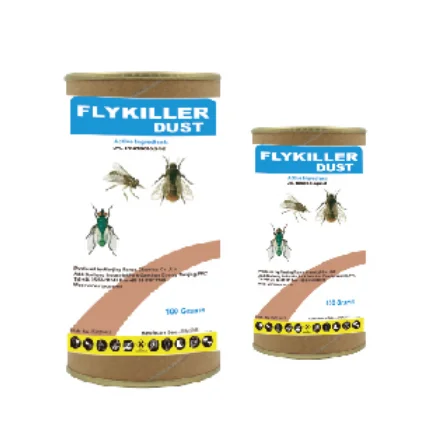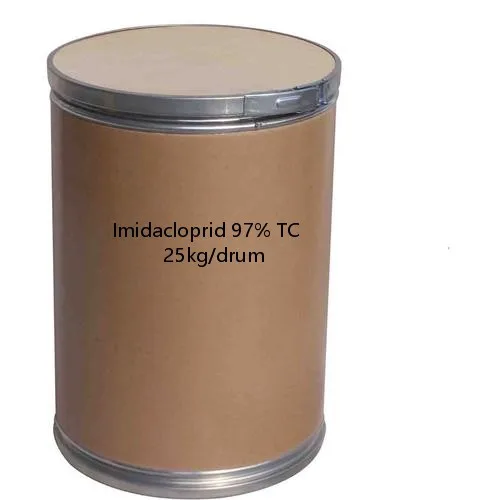Imidacloprid adalah semprotan serangga neonicotinoid. Bahan kimia ini dirancang untuk membunuh serangga berbahaya. Imidacloprid membunuh dengan menyerang sistem saraf serangga, membunuhnya dengan cepat. Penggunaan insektisida ini telah dikenal oleh masyarakat selama lebih dari 20 tahun - ia telah digunakan sebagai salah satu semprotan serangga paling popular di dunia. Ini adalah kegemaran di kalangan petani dan penanam taman yang menggunakannya untuk melindungi tanaman mereka dari puluhan jenis serangga berbeza.
Imidacloprid berfungsi ajaib dalam membasmi pelbagai jenis serangga - seperti aphids, rayap, dan kumbang untuk menyebut beberapa. Jika tidak dikawal, serangga-serangga ini boleh menyebabkan kemusnahan dalam taman dengan sangat mempengaruhi kesihatan tumbuhan. Imidacloprid adalah sesuatu yang hebat kerana ia bertahan lama. Fakta ini saja bermaksud bahawa ia boleh melindungi tumbuhan selama berminggu-minggu, kadang-kadang malah berbulan-bulan. Oleh kerana ia mempunyai separuh hayat yang panjang, ini mengurangkan jumlah penyemburan yang diperlukan oleh petani. Anda akan menyelamatkan masa dan wang mereka, terutamanya pengeluar makanan memerlukan ini.
Tetapi sekerap apa yang imidacloprid mungkin memberi kebaikan, terdapat kebimbangan berkaitan penggunaannya (Raj. Masalah utama kedua adalah ia boleh melukai serangga berguna juga, seperti lebah dan rama-rama. Serangga-serangga seperti ini sangat penting untuk penyerbukan dan kesihatan keseluruhan suatu ekosistem. Ini mungkin menjadi masalah kerana bermaksud ia mempunyai potensi masalah alam sekitar. Risiko jangka panjang adalah imidacloprid boleh menumpuk dalam tanah dan air, menyebabkan kerosakan berterusan kepada ekosistem setempat dengan masa. Sains masih lagi mengkaji fenomena ini.
Keupayaan imidacloprid untuk selamat dalam ekosistem masih sangat diperdebatkan. Ia boleh membahayakan lebah dan penyerbuk lain pada dos rendah bahan kimia tersebut, seperti yang ditemui dalam beberapa kajian. Walau bagaimanapun, imidacloprid tidak menyebabkan kerosakan yang signifikan dalam kajian lain. Kesan Imidacloprid terhadap Alam Sekitar akibat jangka panjang penggunaan imidacloprid masih cuba dipahami dengan dapatan baru dan pendapat berbeza datang dari para saintis. Ini adalah soalan penting yang perlu terus dikaji supaya kita dapat menentukan apa yang akan berfungsi untuk pengeluaran tumbuhan dan juga untuk alam semula jadi.

Imidacloprid telah menjadi pusat salah satu perdebatan terketat apabila datang kepada kesannya terhadap lebah dan rama-rama, kedua-duanya pengenbunan. Walaupun pembaca mungkin merasa tingkah laku serangga-serangga tertentu kurang menarik, mereka sangat penting kerana mengenbunkan banyak buah-buahan dan sayur-sayuran. Namun, jelas bahawa pestisida seperti imidacloprid juga boleh memberi impak negatif kepada serangga bermanfaat ini walaupun dalam dos rendah. Bagi mereka yang menghargai alam sekitar dan pertanian yang baik, ini adalah punca kebimbangan.

Akibat kebimbangan ini, beberapa negara telah memutuskan melarang penggunaan imidacloprid dan insektisida neonicotinoid lainnya; seperti Perancis (Perancis melarang pestisida Syngenta dengan kaitan kepada kerosakan pada lebah), Kanada. Bukan sahaja tentang bagaimana bahan kimia ini merosakkan penyerbuk dan alam sekeliling secara amnya. Sebaliknya, beberapa negara seperti Amerika Syarikat telah jauh lebih berhati-hati. Mereka telah menghadkan masa dan kaedah untuk mana insektisida ini boleh diterapkan supaya petani masih boleh menyelamatkan tanaman mereka tetapi dengan kesedaran akan kemungkinan balasan buruk.

Selain itu, penyelidik sedang menyiasat teknologi baru. Sebagai contoh, idea yang lebih berambisi - tanaman genetik terpencil (GM) dengan keupayaan menahan serangga. Tanaman yang dimaksudkan akan tahan terhadap serangga, jadi kurang perlu menggunakan insektisida kimia. Sedikit lebih inovatif adalah penggunaan drone yang boleh memantau dan mengenalpasti serangga di ladang. Teknologi ini meningkatkan kecekapan penggunaan insektisida dan membolehkan penjagaan kawasan yang terserang serangga, hasilnya adalah penggunaan keseluruhan bahan kimia oleh peladang menjadi lebih sedikit. Tetapi kita mesti terus melabur dalam penyelidikan dan inovasi, supaya insektisida boleh digunakan dengan selamat pada tanaman tetapi kekal lestari untuk masa depan.
Kami sentiasa menunggu perundingan anda.